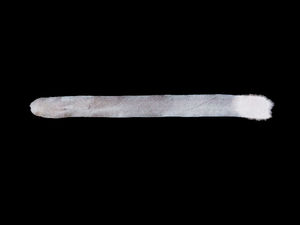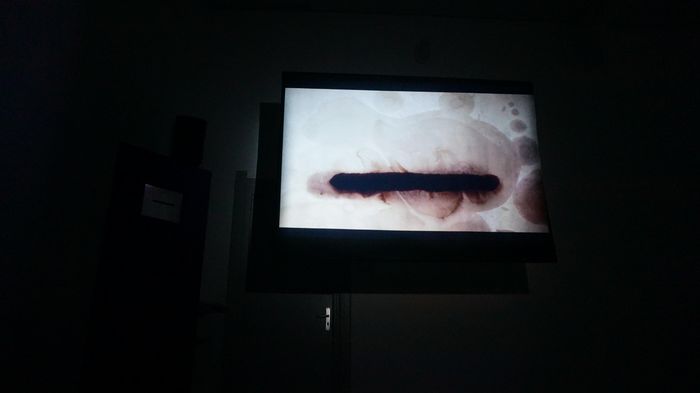A Unique Line: Difference between revisions
Chen Junyu (talk | contribs) No edit summary |
Chen Junyu (talk | contribs) No edit summary |
||
| Line 6: | Line 6: | ||
|Website=http://chenjunyu.org/ | |Website=http://chenjunyu.org/ | ||
|Catalog-Text1= | |Catalog-Text1= | ||
To speak about the natural truth of the process of drawing – the movement of making strokes on paper, is not a singletrack activity, it is interactive. The roughness of paper, the sound generated by the friction between paper and pen point, and the continuing change created by the lines which reflects to whole drawing, somehow triggers artist to make the next step and influence her decision making. “Each stroke had to be a decision and was answered by a new question.” (Rosenberg, 1952) | |||
This minimal act of drawing becomes meaningful for me through time. The continuous action gains the control to draw. It is a meditative process while trying to fully focus on holding the brush and regular breathing. I feel directly perceived through the senses that I am tracing the lines. I like this minimal way for creation, because the simplicity for expression, it leaves a lot “empty space” for viewer to imagine. | |||
|Description= | |||
Why to draw, here and now? | |||
| | |||
“Nature presents our eyes with colored surfaces to which painted areas of pigment may correspond, and with inflected surfaces to which sculptural surfaces may correspond. But nowhere does it present our eyes with the lines and the relationships between lines which are the raw material of drawing.” (Philip Rawson,Drawing). Drawing expresses the artist’s individual perception and produces a statement to the world by depicted lines. The underlying movements of the lines is the concrete documentation of this narrative. This work visualises the movements of “making” emphasing the lively and personal process of the drawing. | |||
[[File:DSC06559_copy.jpg|700px]] | |||
}} | }} | ||
Revision as of 21:25, 14 June 2015
| A Unique Line | |
|---|---|
| Creator | Junyu Chen |
| Year | 2015 |
| Bio | Junyu CHEN (1990, China) is an artist using video and drawing as her main tool for self-analysis to address the visual language we communicate with. She has a specific enthusiasm for depicting the process of drawing physically and conceptually, and into the way we question the current state of drawing. |
| Thumbnail | |
| Website | http://chenjunyu.org/ |
Why to draw, here and now?
“Nature presents our eyes with colored surfaces to which painted areas of pigment may correspond, and with inflected surfaces to which sculptural surfaces may correspond. But nowhere does it present our eyes with the lines and the relationships between lines which are the raw material of drawing.” (Philip Rawson,Drawing). Drawing expresses the artist’s individual perception and produces a statement to the world by depicted lines. The underlying movements of the lines is the concrete documentation of this narrative. This work visualises the movements of “making” emphasing the lively and personal process of the drawing.


